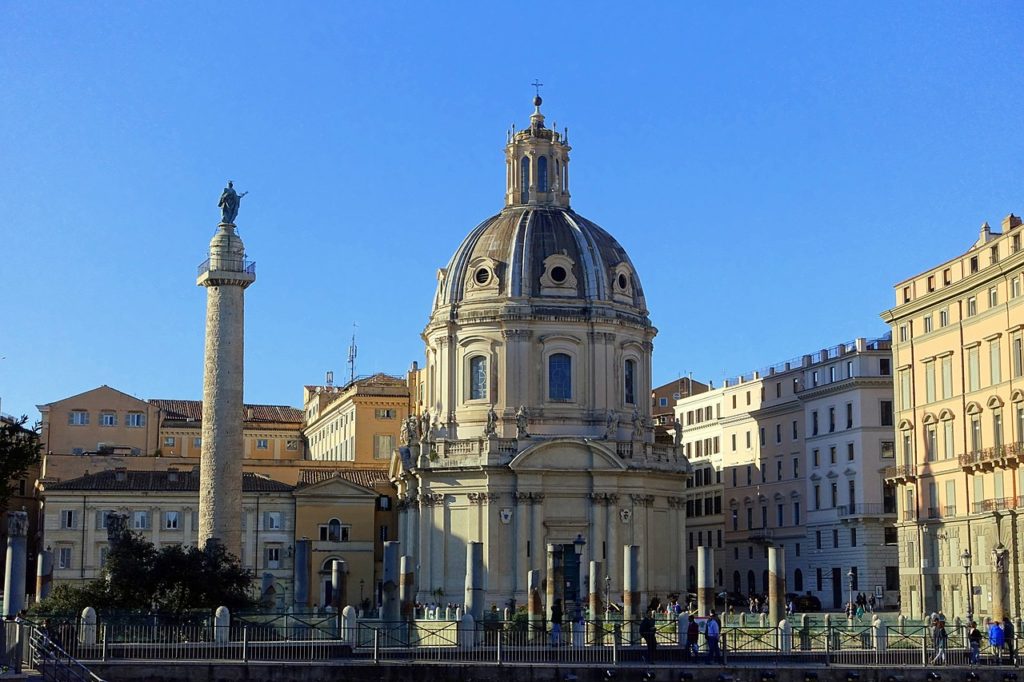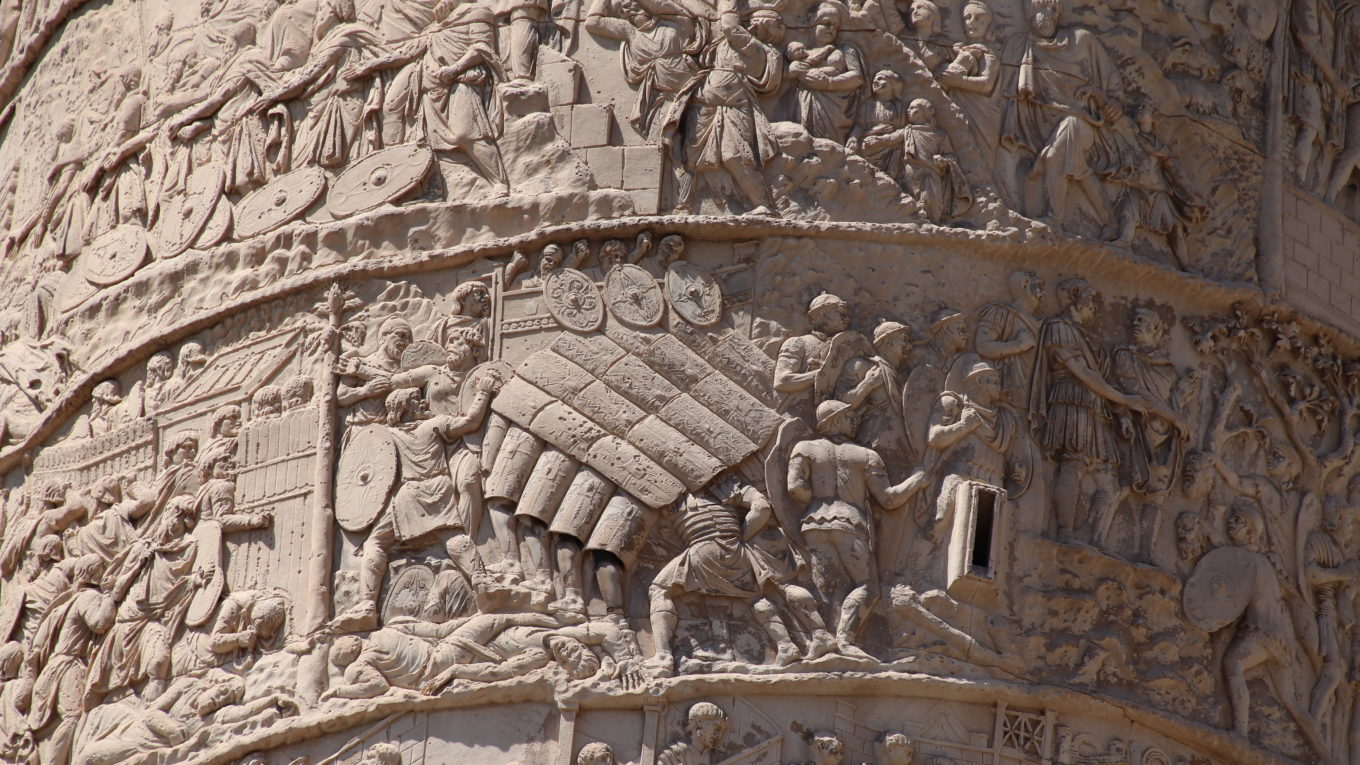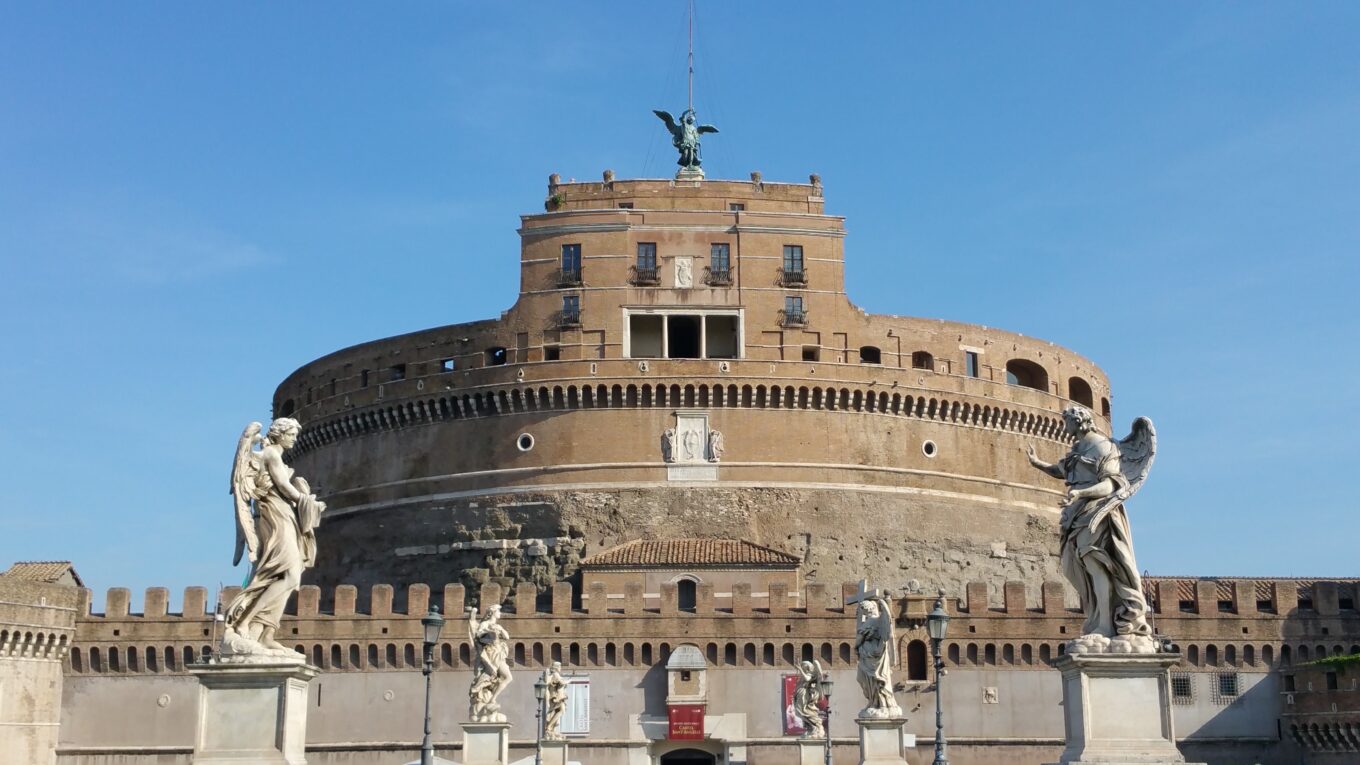Top 8 Ancient Roman Victory Columns
The Roman Empire was one of the most powerful and advanced civilizations of all time. They controlled much of Europe and the Mediterranean and they built countless important buildings and monuments throughout their empire. To commemorate important people and events, the Romans constructed what are known as Victory Columns. These columns vary in size and style, but they were all built for the same purpose, to commemorate something or someone of importance. This could be a victorious war, as is the case with Trajan’s Column, or the end of an important road, as is the case for the Via Appia, in Brindisi. Regardless of why they were built, these Ancient Roman Victory Columns are among some of the most impressive monuments from the days of Ancient Rome.
Who were the Romans, and why did they build Victory Columns?
At its peak, the Ancient Roman Empire spread from the British Isles in the northwest all the way to modern-day Egypt and Iraq in the southeast. The Romans were able to expand their empire through many different military conquests. Often when Roman Emperors won great victories they would build Victory Columns as a way to commemorate their achievements. The two greatest examples of this are the Column of Marcus Aurelius, and Trajan’s Column, both located in Rome. But the Romans also built Victory Columns throughout their empire in places like Africa, the Middle East, and Europe.
What are the best surviving Roman Victory Columns?
Today dozens of examples of Roman Victory Columns can be found throughout Europe and the Mediterranean, and this article will showcase some of the most impressive examples that survive from the times of the Ancient Roman Empire.
1. Trajan’s Column – Rome, Italy

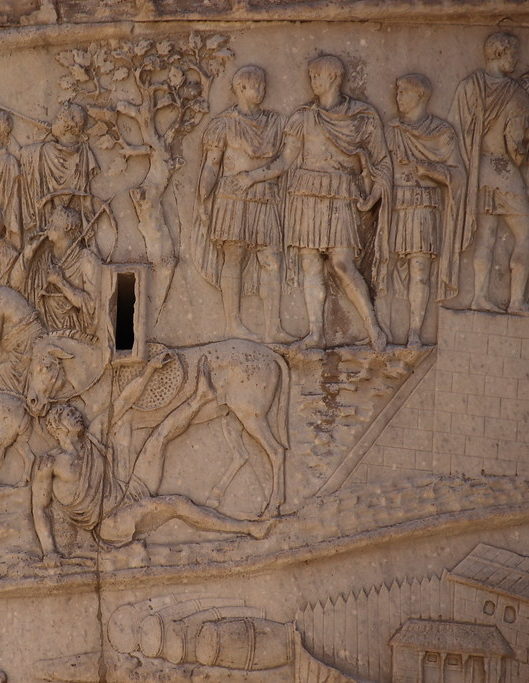
Trajan’s Column is a Roman Victory Column that honors the victories of Roman Emperor Trajan. Many argue that Trajan was Rome’s greatest emperor. He was an incredible military general, and he helped expand Rome to its greatest territorial extent in 117 CE. The column specifically depicts the conflict between Rome and the Dacians, who were an independent kingdom that existed around the region of modern-day Romania. The area was rich in minerals and other resources and therefore Trajan’s victory brought great wealth to the empire. The column has a spiral relief that depicts Trajan himself, as well as soldiers, landscapes, and actual events from the Dacian Wars. This spiral design was replicated in other Roman Victory Columns and despite it being exposed to the elements, Trajan’s Column remains remarkably well preserved.
2. Column of Marcus Aurelius – Rome, Italy

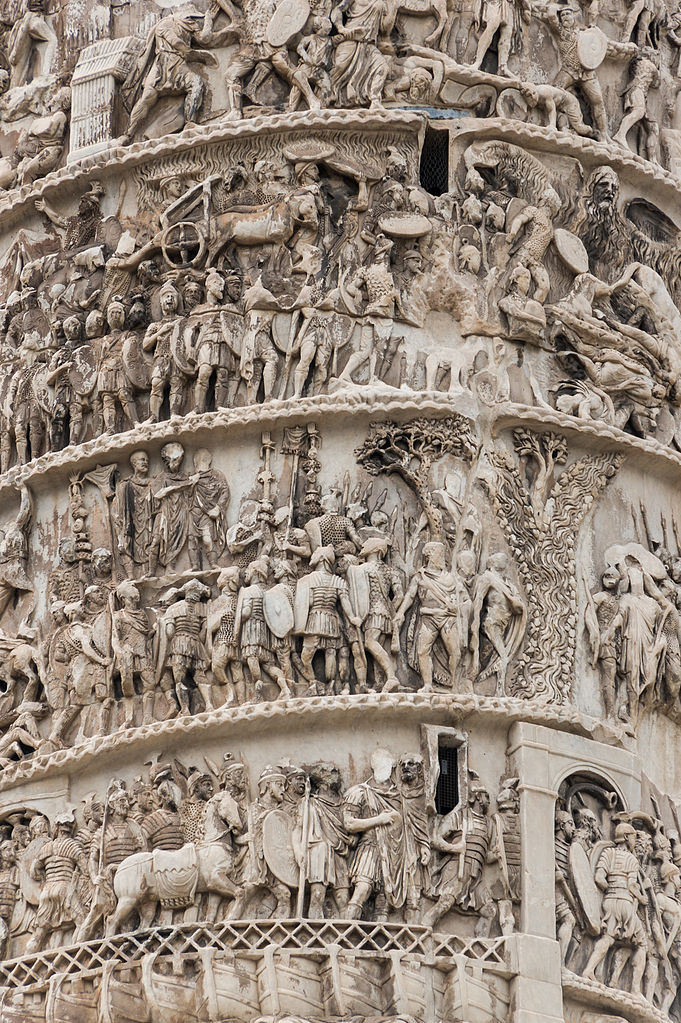
Marcus Aurelius is regarded as one of Rome’s last great emperors. He is known as an intelligent man, a philosopher, and a man of academics and learning. Historians aren’t sure of the exact date of the column’s completion, but it would have been either at the end or shortly after the reign of Marcus Aurelius, who ruled from 161-180 CE. The column was modeled after Trajan’s Column, which was erected a few decades prior. It depicts the great victories of Marcus Aurelius over the Germanic Tribes that lived along the northern border of the Roman Empire. Although Marcus Aurelius is regarded as a great emperor, his reign was plagued by constant conflict with the unruly Germanic tribes that harassed Rome’s borders.
3. Column of Constantine – Istanbul, Turkey
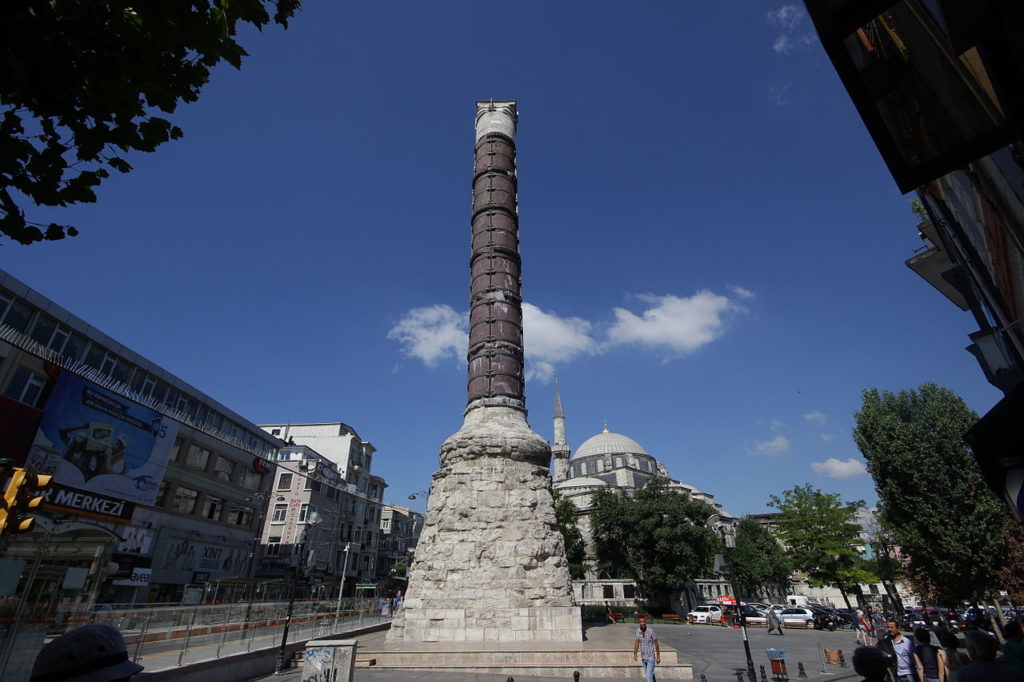
Another massive Victory Column that was constructed by the Ancient Romans is the Column of Constantine. It is located in the city of Istanbul, the modern-day capital of Turkey. However, at the time it was built, the city was named Constantinople, after Constantine himself. Constantine is regarded as one of the saviors of the Roman Empire. He helped reorganize Rome and helped bring the empire into a state of prosperity after a long period of chaos and political instability. The Column of Constantine was built to commemorate his rule and to mark the renaming of the city from Byzantium to Constantinople. Constantinople served as the capital of the Roman Empire and eventually as the capital of the Eastern Roman or Byzantine Empire.
4. Pompey’s Pillar – Alexandria, Egypt
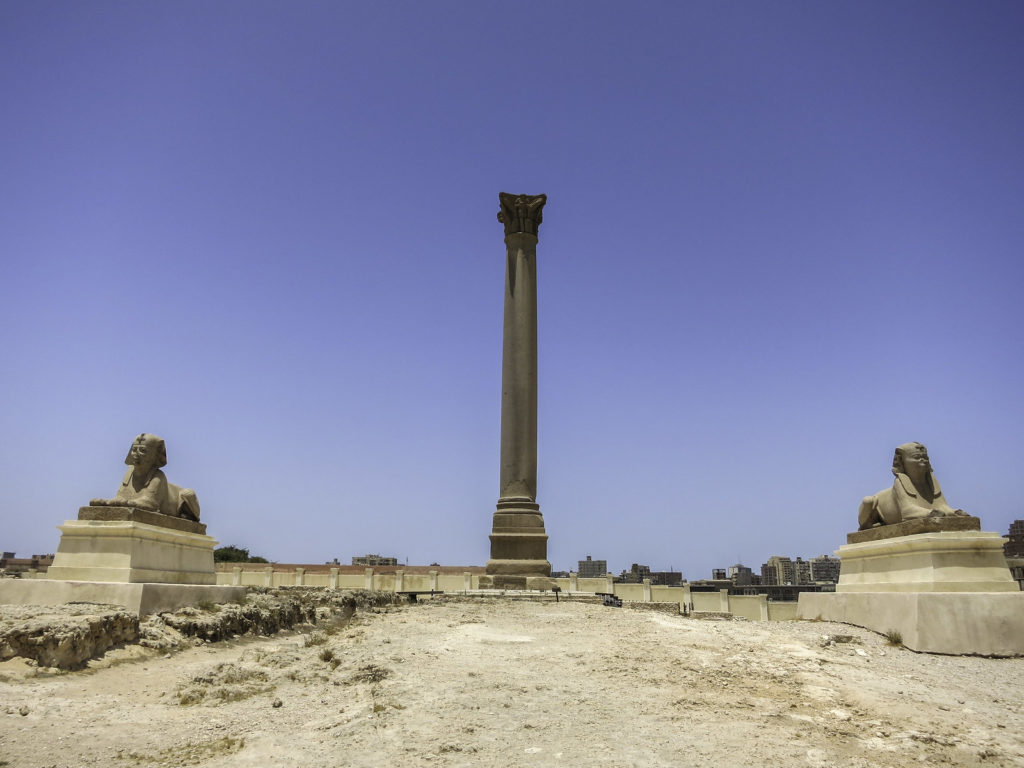
Pompey’s Pillar is a Roman Victory Column dedicated to Emperor Diocletian. Diocletian ruled Rome from 284 to 305 CE, and he was one of the only emperors to abdicate the throne. He retired to a quiet life in a massive villa located in what is now Split, Croatia. The column stands tall and is flanked by two sphinxes and is located on the outskirts of Alexandria. Pompey’s Pillar is one of several Ancient Roman monuments located within Alexandria, which at the time was the second-largest city in the empire. The city contains a Roman Amphitheater, as well as the remnants of a Roman Forum. All of these monuments are great indicators of the long history of Roman rule within Egypt.
5. Column of the Via Appia – Brindisi, Italy
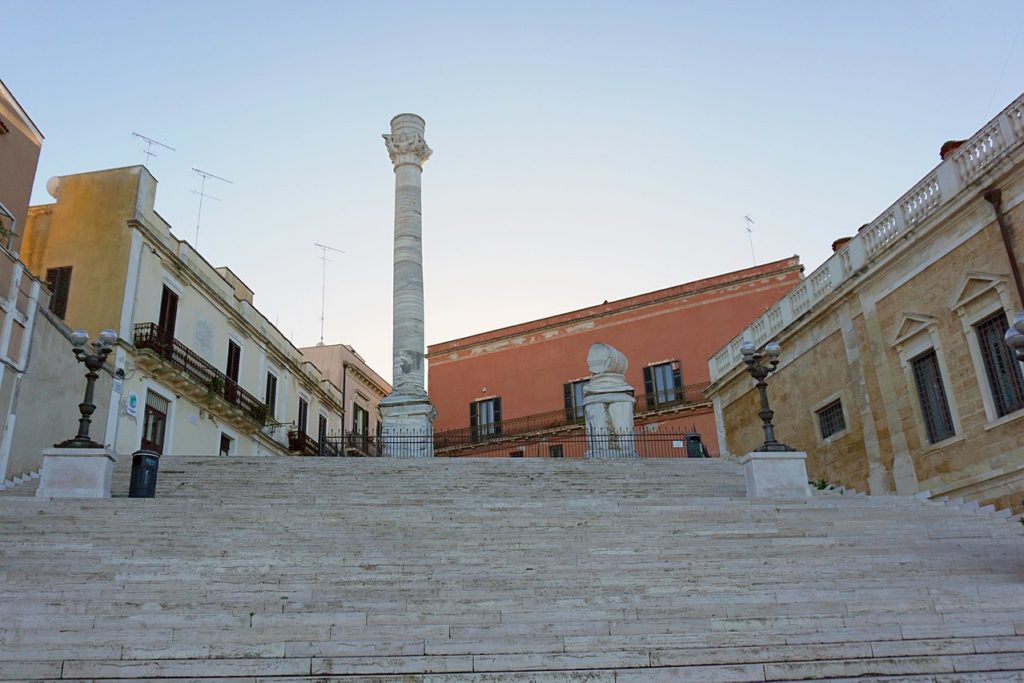
The popular saying, “all roads lead to Rome” refers to the massive network of roadways connecting all corners of the Ancient Roman Empire with the empire’s capital city. One of the most important roads that made up this network was the Via Appia or the Appian Way. This road connected Rome to most of the cities in southern Italy including Capua, Taranto, and Brindisi – the termination point of the road. Brindisi is a large port city located on the heel of the Italian Peninsula. The Column of the Via Appia was built at the final ending point of the Appian Way, and it signifies the importance that the Romans put on their roadways.
6. Column of Jupiter – Mainz, Germany
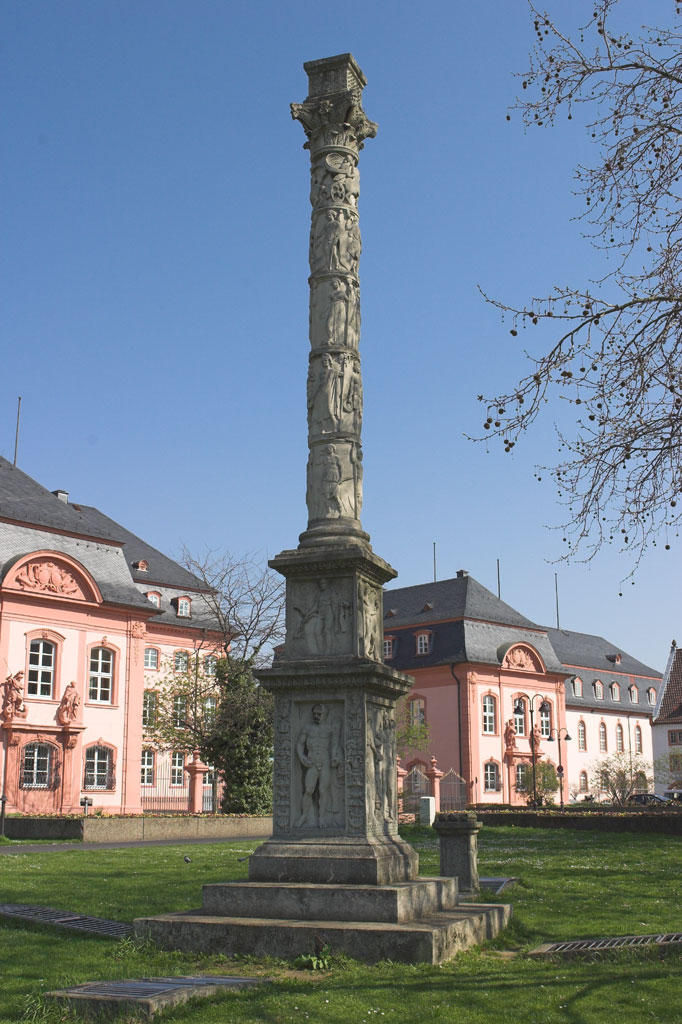

Right Photo by Carole Raddato from Wikimedia Commons
The Column of Jupiter is located in the German city of Mainz, which was once on the outer fringes of the Roman Empire. It was one of several columns dedicated to the Roman god Jupiter in this part of the empire. The Romans wanted to spread their religion throughout the outer territories, and Victory Columns dedicated to important gods were a way to help the spread. The Jupiter Column of Mainz is one of the more intricate of all the columns on this list. Both the pedestal base and the rounded shaft of the column are completely covered with carved reliefs. These carvings mostly depict religious themes, as a way to teach an illiterate population about the Pagan beliefs of the Romans.
Like Architecture of Cities? Sign up for our mailing list to get updates on our latest articles and other information related to Architectural History.
7. Column of Phocas – Rome, Italy

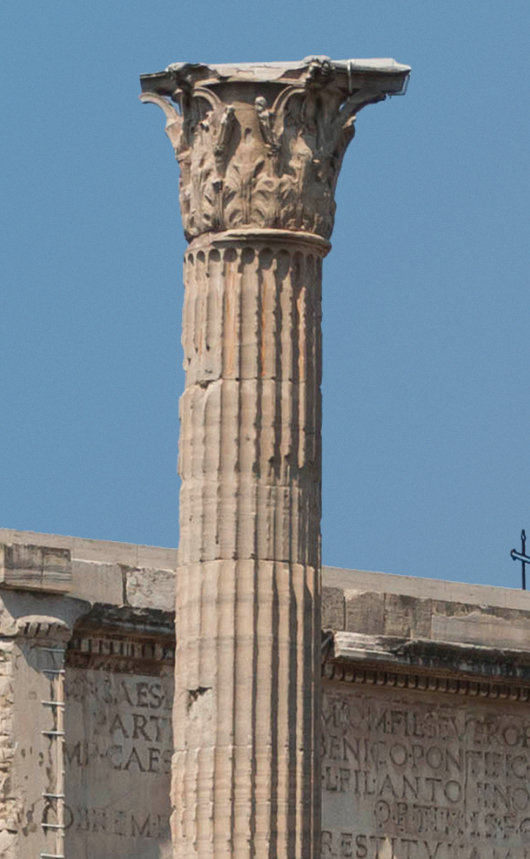
The Column of Phocas is a Roman Victory Column erected by the Eastern Roman Empire, also known as the Byzantine Empire. Rome and the area around it were overtaken by the Kingdom of the Ostrogoths after the fall of the Western Roman Empire in 476 CE. But the Eastern Roman Empire under Justinian retook Italy and brought it back into Roman territory. Eventually, Phocas became emperor in 602 and the Column of Phocas was erected during his reign in 608 CE. The column itself is a classic Greco-Roman Corinthian. It has a traditional capital and fluting along the shaft. The Column of Phocas stands tall over the Roman Forum, not far from the Triumphal Arch of Septimius Severus, and it is one of dozens of monuments within the area.
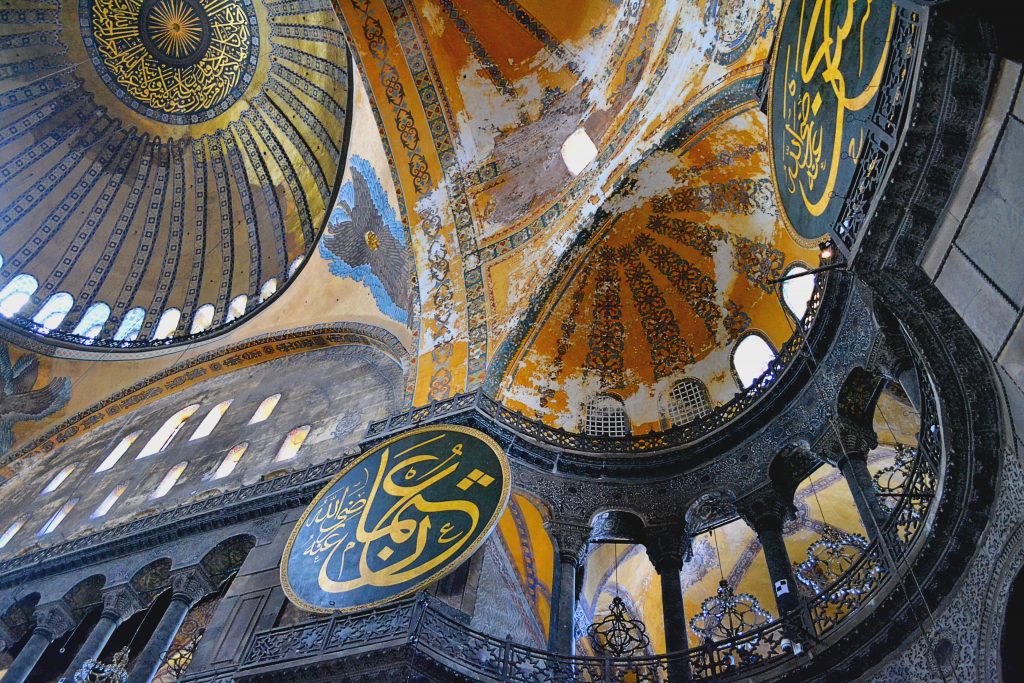
After the fall of the Western Roman Empire in 476 CE, the Eastern Roman Empire lived on for centuries. Also known as the Byzantine Empire, it would last until the fall of Constantinople in 1453. Check out our article, “Top 25 Examples of Byzantine Architecture” to learn more!
8. Column of Marcian – Istanbul, Turkey

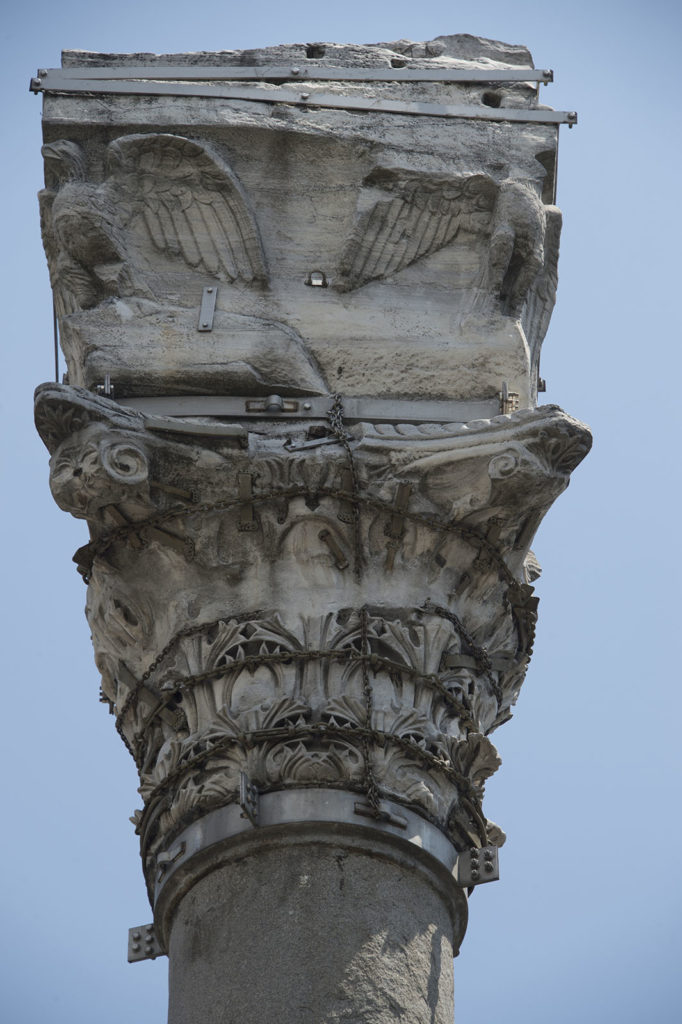
Right Photo by Dosseman from Wikimedia Commons
The Column of Marcian is a Roman Triumphal Column dedicated to Emperor Marcian who ruled from 450-457. Marcian ruled the eastern half of the Roman Empire after it was split in the year 395. The column is located within what was then the capital of the Eastern Roman Empire, Constantinople, a city now known as Istanbul. The column has suffered a great deal of erosion over the centuries. Today it is so damaged, it can only stand with the help of multiple steel structural braces. Despite the modern modifications, the Column of Marcian is still a great example of the presence of the Ancient Romans within modern-day Istanbul.
Influence of Roman Victory Columns
Ancient Roman Triumphal Columns were some of the most impressive monuments built by the Roman Empire. They commemorated important people, great battles, and other significant milestones. These columns went on to be extremely influential to subsequent nations. Below you can see three great examples of Triumphal Columns built long after the days of the Ancient Romans. On the left is a column within St. Marks Square in Venice. It was built by the Republic of Venice and is topped with the Venetian Lion, a symbol of the republic. In the Center below, you can see the Monument of Columbus, a triumphal column located in Barcelona at the endpoint of La Rambla. And on the right is the massive Alexander Column located in St. Petersburg Russia, which is one of the tallest columns ever built at a height of 155 feet (47 m).
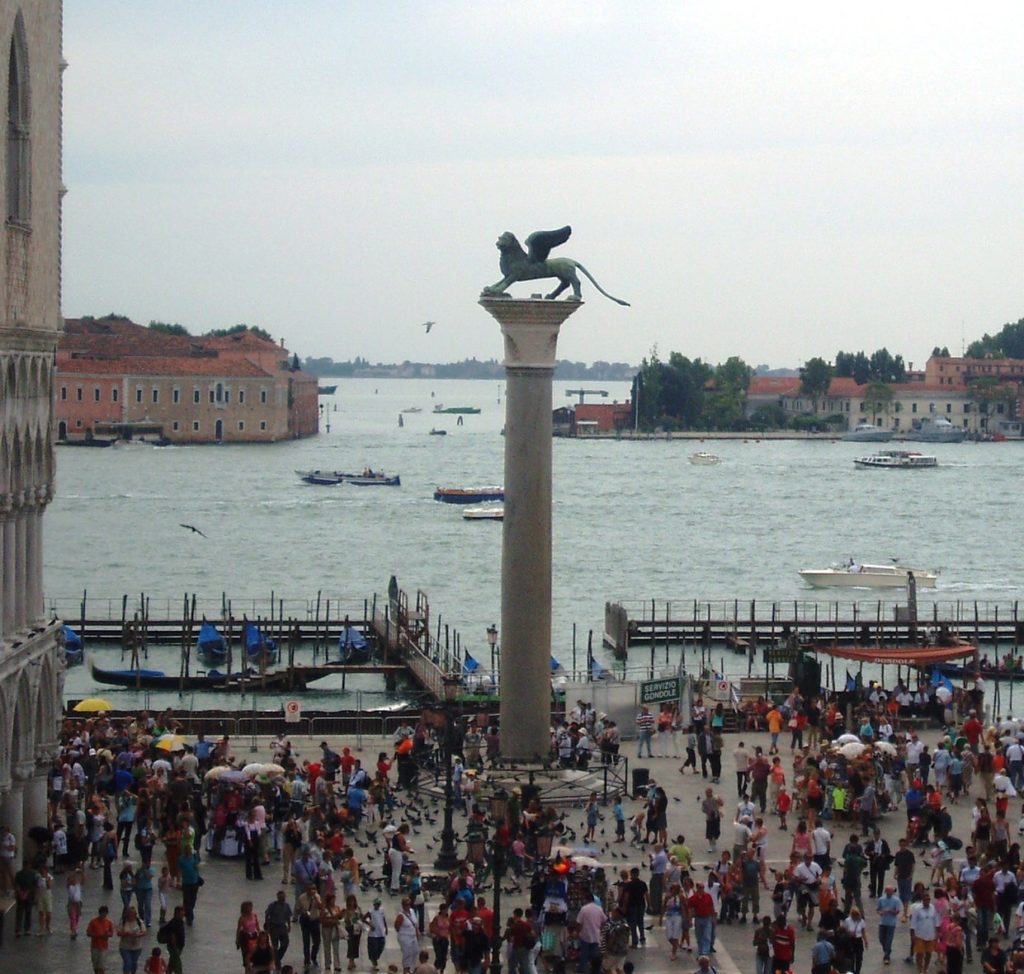

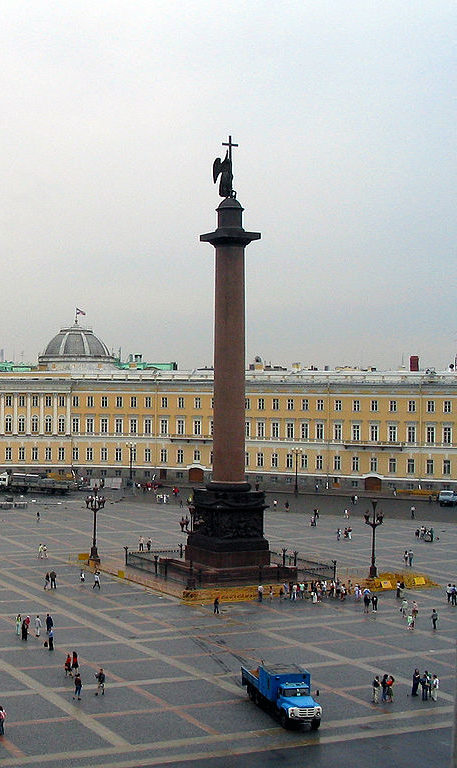
Each one of these monuments was influenced by the Victory Columns of the Ancient Romans in different ways. They all make a statement commemorating important people and containing symbols of national pride and identity. Although some forms of Roman Architecture such as aqueducts, temples, and amphitheaters are more well known, the Victory Columns of the Ancient Romans are among the most impressive moments from the Ancient World. And even though the Ancient Roman Empire hasn’t been around for some time, so much of our architectural traditions date back to the structures of the Ancient Romans

- About the Author
- Rob Carney, the founder and lead writer for Architecture of Cities has been studying the history of architecture for over 15 years.
- He is an avid traveler and photographer, and he is passionate about buildings and building history.
- Rob has a B.S. and a Master’s degree in Architecture and has worked as an architect and engineer in the Boston area for 10 years.
Like Architecture of Cities? Sign up for our mailing list to get updates on our latest articles and other information related to Architectural History.
